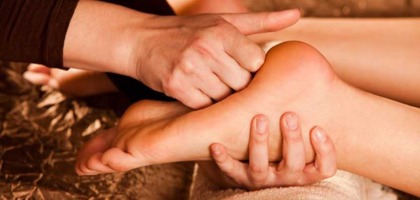News - Learn about the secrets of the footwear industry!
Reflexology – The power of feet
Have you ever heard of Reflexology?
Some believe that our entire body is connected, more specifically with the feet, so everything that happens to our feet can affect other areas and through them it’s possible to heal or ease pain and illnesses.
We know that feet are important, so on the EscapeShoes blog we want to dedicate this post to learn a little bit more about this ancient technique of healing massages. Just to clarify, we don’t defend reflexology as an alternative to scientific medicine, even though this technique’s currently used by some medicine professionals as a complementary therapy with other treatments. However, since it’s feet… we can’t resist!
History of Reflexology

Its origins aren’t clear, since there’s signs that it was used by ancient civilizations, in different parts of the world. What we do know is that it was in 1913 that American doctor William Fitzgerald started to investigate this theory, by even publishing a book together with Doctor E.F. Bowers, called “Zone therapy” (1917), which develops the idea that each organ of the human body has a reflex located on the feet and hands.
The word reflexology was conceived by Eunice Ingham, a physiotherapist that included this method in her therapies, and, despite her efforts of transmitting it to other professionals and officially including it in the medical world, she didn’t have much success, and she was, more than once, arrested for practising it without permission.
Nowadays, and since there’s a lack of scientific data that explain the effects of reflexology, it’s part of the Pseudoscience group, but it has many followers that consider it very beneficial.
How Reflexology works
.jpg)
Also called Zone Therapy, this technique’s based on the idea that all organs of the human body have a “reflex” on the feet and hands, i.e. they’re connected through channels known as pathways. Therefore, by stimulating specific points in your feet or hands, you can influence some parts of the body, as if you’re massaging or treating that area directly.
This way, by following the map of the feet that you see on the previous image, reflexotherapy is able to alleviate pain or reduce stress thanks to a pressure massage, which for some is very relaxing, and for others it results on excruciating torture.
Benefits of Reflexology

Even though there’s little scientific proof that supports the benefits of Zone Therapy, it seems to have many. Reflexologists remind us that it isn’t a relaxing massage, even though it can have that effect if you wish to, and its purpose is to influence other body parts to alleviate pain, to reduce stress, to prevent health issues, to eliminate toxins and to improve the immune system.
Reflexology’s recommended to people of any age, but it’s especially beneficial to elders and pregnant women.
If you want more detailed information about the advantages of this technique, you can consult the following websites: Association of Reflexologists or Britreflex.
Like everything else in life, and especially like many natural therapies, reflexology has many followers, but it receives much criticism. In my opinion, it all depends on the experiences that we have, and I like to keep an open mind to different possibilities, because you never know which new things will surprise you. Even though I haven’t tried reflexotherapy yet, I’m quite curious about it. Furthermore, while I was investigating it, I discovered that there are manuals to do a self-massage with simple instructions that help to alleviate day-to-day inconveniences.

Well, either it’s science or belief, the reality is that the idea that our feet are connected to the rest of our body is the perfect excuse to take care of them. Who knows if we’ll be helping to prevent other malaises, but a good massage never hurt anyone!
While I decide, I’d love to know your opinion. Have you ever tried this healing technique? Leave us a comment about your experience here, at the EscapeShoes blog.

 Português
Português Español
Español

